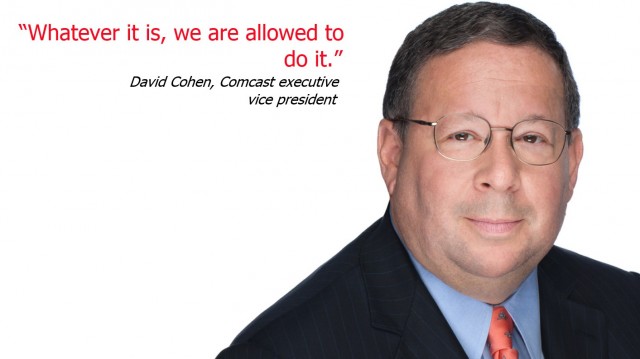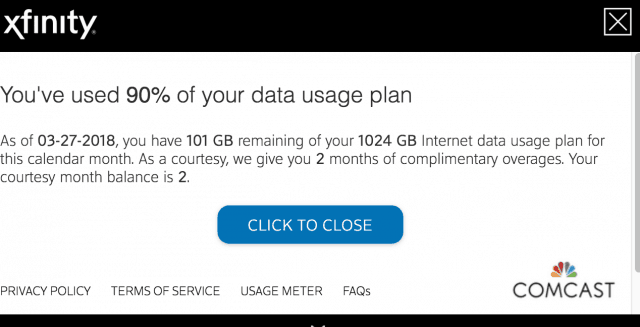 (Reuters) – U.S. cable operator Comcast Corp is asking investment banks to increase a bridge financing facility by as much as $60 billion so it can make an all-cash offer for the media assets that Twenty-First Century Fox Inc has agreed to sell to Walt Disney Co for $52 billion, three people familiar with the matter said on Monday.
(Reuters) – U.S. cable operator Comcast Corp is asking investment banks to increase a bridge financing facility by as much as $60 billion so it can make an all-cash offer for the media assets that Twenty-First Century Fox Inc has agreed to sell to Walt Disney Co for $52 billion, three people familiar with the matter said on Monday.
Comcast Chief Executive Brian Roberts only plans to proceed with the bid if a federal judge allows AT&T Inc’s planned $85 billion acquisition of Time Warner Inc to proceed, the sources said. The U.S. Department of Justice has opposed the AT&T-Time Warner deal over antitrust concerns, and a decision from U.S. District Court Judge Richard Leon is expected in June.
Disney Chief Executive Bob Iger clinched an all-stock deal with Fox Executive Chairman Rupert Murdoch in December to acquire Fox’s film, television and international businesses, giving the world’s largest entertainment company an arsenal of shows and movies to combat growing digital rivals Netflix Inc and Amazon.com Inc.
Comcast, owner of NBC and Universal Pictures, has also made a 22 billion pound ($30 billion) offer to acquire the 61 percent stake in European pay-TV group Sky Plc that Fox does not already own. In doing so, it topped an earlier offer for the entirety of Sky by Fox.
Last November, Comcast offered to acquire most of Fox’s assets in an all-stock deal valued at $34.41 per share, or $64 billion, a regulatory filing showed last month. Like Disney, Comcast sought to buy Fox’s entertainment networks, movie studios, television production and international assets, the filing shows.
Fox ended up announcing an all-stock deal with Disney for $29.54 per share. In the regulatory filing, Disney and Fox cited regulatory hurdles as reasons to reject Comcast’s bid, even though they did not reference it by name.
 The exact value of Comcast’s new bid for the Fox assets is not yet clear, although the $60 billion in new financing indicates it is seeking significant firepower to outbid Disney. Comcast already has a $30 billion bridge loan to finance its Sky offer.
The exact value of Comcast’s new bid for the Fox assets is not yet clear, although the $60 billion in new financing indicates it is seeking significant firepower to outbid Disney. Comcast already has a $30 billion bridge loan to finance its Sky offer.
The sources asked not to be identified because the matter is confidential. Comcast, Fox and Disney declined to comment.
Fox shares rose 5.13 percent to $39.99 on the news in after-hours trading in New York on Monday. Comcast shares were down 1.5 percent to $31.90, while Disney shares were down 0.5 percent to $102.00.
Murdoch, who owns close to a 17 percent stake in Fox and holds about 40 percent of the voting power, prefers to be paid in stock rather than cash for the Fox assets, because this makes the transaction non-taxable for shareholders, sources have said. It is not clear how receptive he would be to an all-cash offer.
Last month’s regulatory filing also showed that Fox viewed Disney’s stock as more valuable than Comcast’s, based on historic prices, and felt that a deal between Disney and Fox would generate greater long-term value. The Roberts family controls Comcast through a dual-class stock structure.
Comcast’s stock has dropped since then, from around $38 to about $32 now, giving the company a market capitalization of $149 billion.
Disney has committed to share buybacks as a way of returning cash to Fox shareholders. As a result, Comcast sees an opening in being disruptive to the deal by making an all-cash bid, according to the sources.
In its deal with Disney, Fox agreed to separate the Fox Broadcasting network and stations, Fox News Channel, Fox Business Network, its sports channels FS1, FS2 and the Big Ten Network, into a newly listed company that it will spin off to its shareholders.
Reporting by: Greg Roumeliotis and Liana B. Baker in New York; Additional reporting by Jessica Toonkel in New York; Editing by Tiffany Wu and Lisa Shumaker


 Subscribe
Subscribe
 A 2016 study suggests Comcast may have more heavy users than it is willing to admit. The research firm iGR found average broadband usage that year was already at 190 GB and rising. There is no third-party verification of providers’ usage statistics or usage measurement tools, but there are public statements from Comcast officials that suggest the company faces a predictable upgrade cycle to deal with rising usage.
A 2016 study suggests Comcast may have more heavy users than it is willing to admit. The research firm iGR found average broadband usage that year was already at 190 GB and rising. There is no third-party verification of providers’ usage statistics or usage measurement tools, but there are public statements from Comcast officials that suggest the company faces a predictable upgrade cycle to deal with rising usage. Codon now subscribes to YouTube TV for local channels and a slimmed-down TV package and has paid subscriptions to Hulu, Netflix, and CBS All-Access Pass.
Codon now subscribes to YouTube TV for local channels and a slimmed-down TV package and has paid subscriptions to Hulu, Netflix, and CBS All-Access Pass. Nathan Gray woke up one morning this month and received an alarming notification from Comcast, his internet provider, claiming he had exceeded his Comcast
Nathan Gray woke up one morning this month and received an alarming notification from Comcast, his internet provider, claiming he had exceeded his Comcast  “Today when I logged in, I had apparently used 196 GB yesterday,” Amaasing wrote. “196 GB in 24 hours? Seriously?”
“Today when I logged in, I had apparently used 196 GB yesterday,” Amaasing wrote. “196 GB in 24 hours? Seriously?” After “courtesy months” expire, you are on the hook for whatever excess usage Comcast determines you have consumed. Some Comcast customers assume the courtesy month counter resets each calendar year, but in fact it only resets after 12 consecutive months of staying within your allowance limit.
After “courtesy months” expire, you are on the hook for whatever excess usage Comcast determines you have consumed. Some Comcast customers assume the courtesy month counter resets each calendar year, but in fact it only resets after 12 consecutive months of staying within your allowance limit. Comcast is on track to lose more than double the number of cable-TV cancellations it experienced in 2017 due to cord-cutting, predicted a Wall Street analyst.
Comcast is on track to lose more than double the number of cable-TV cancellations it experienced in 2017 due to cord-cutting, predicted a Wall Street analyst.